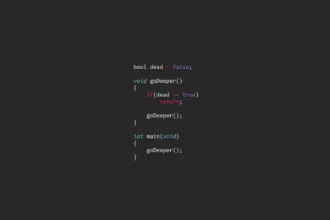Are you ready to unravel the mysteries of the GARCH model in Python? Whether you’re a data enthusiast or a finance aficionado, this blog post is your ultimate guide to understanding and building a GARCH model from scratch. Get ready to dive into the world of volatility forecasting and discover how this powerful model can help you make informed decisions in the ever-changing financial landscape. So, grab your coding gloves and let’s embark on this exciting journey together!
Table of Contents
ToggleUnderstanding GARCH Model in Python
At the heart of financial time series analysis lies the quest to understand and predict market behaviors. The Generalized Autoregressive Conditional Heteroskedasticity (GARCH) model emerges as a formidable tool in this quest. This statistical marvel delves into the realms of time-series data where the variance is not a constant but a dynamic entity, prone to the influences of past errors. It’s akin to recognizing that financial markets have a memory, where the magnitude of past fluctuations can whisper predictions about future volatility.
Unlike models that focus on the average tendencies of a financial series, like the ARIMA model, GARCH places the spotlight on the variance of the series. It accepts that market volatility is not a random outburst but follows an intricate dance pattern choreographed by its own historical moves. This self-referential nature makes GARCH particularly adept at modeling the volatility clusters frequently observed in financial markets—periods where tranquility and tempests alternate in an investor’s journey.
But how does one harness the power of GARCH in the modern analyst’s sandbox, Python? Python, with its robust libraries and straightforward syntax, enables finance professionals to build and implement GARCH models with relative ease. This not only equips them with the capability to forecast risk but also to understand the underlying mechanics of market volatility.
Let’s distill some key facts about the GARCH model:
| Fact | Description |
|---|---|
| Model Type | GARCH is a statistical model focusing on time-series variance. |
| Main Use | It is used to predict financial market volatility. |
| Comparison to ARCH | GARCH has fewer parameters and captures long-term effects better than ARCH models. |
| Appropriate Usage | It’s suitable for data with volatility clustering and autoregressive conditional heteroskedasticity. |
| Synergy with ARIMA | GARCH can be applied to the residuals from an ARIMA model to account for volatility in error terms. |
Why opt for GARCH over its predecessor, the Autoregressive Conditional Heteroskedasticity (ARCH) model? The GARCH model’s architecture allows for a more compact representation of the dependency in variance. With fewer parameters to estimate, it streamlines the modeling process while capturing a broader scope of volatility dynamics.
One might invoke GARCH when traditional models fall short in capturing the intricacies of financial market fluctuations. It becomes not just a model but a lens to view the market’s inherent nature of risk and reward, providing insights into the expected returns in the face of the ever-changing tides of market volatility.
Although the GARCH model can seem complex at first glance, Python’s computational prowess strips away much of this complexity. This synergy between statistical modeling and programming provides a fertile ground for finance professionals to analyze and predict market volatility with a level of sophistication previously unattainable.
As we proceed to the next section, we will harness Python’s capabilities to construct a GARCH model step by step, turning theory into actionable insights for those eager to decipher the cryptic language of market volatility.
Building a GARCH Model in Python: A Step-by-Step Guide
Embarking on the journey to build a GARCH model in Python is akin to assembling a complex puzzle. Each piece must fit precisely to reveal the intricate picture of financial market volatility. Let’s navigate this process with a methodical approach, ensuring that every step is clear and every calculation, precise.
- Import Necessary Libraries
Our first step is to gather our tools. In Python, this means importing libraries like numpy for numerical operations and pandas for data manipulation. These libraries are the foundational blocks that enable us to handle data with agility and precision.
- Generate a Random Time Series
Now, let’s create our experimental canvas: a random time series. This surrogate data will serve as a proxy for real financial data, allowing us to test and refine our model.
- Create a Pandas Dataframe
With a time series at hand, we transform it into a structured form using a pandas dataframe. This tabular format is not just a storage method; it’s a powerful interface for data wrangling.
- Create and Fit a GARCH Model
It’s time to construct our GARCH model. Employing Python’s libraries, we define the model’s parameters and fit it to our time series. Like a tailor crafting a bespoke suit, we’re shaping the model to our data’s unique contours.
- Print the Model Summary
The moment of truth arrives as we print the model summary. This is a comprehensive report card of our model, detailing the estimated parameters and their significance.
- Visualize the Volatility
They say a picture is worth a thousand words. By plotting the standardized residuals, we create a visual representation of volatility, allowing us to observe patterns and anomalies that numbers alone might not reveal.
- Generate Statistics and Diagnostic Plots
Finally, we generate statistical measures and diagnostic plots. These tools are the lenses through which we assess the model’s performance, providing clarity on its predictive capabilities and robustness.
Through each of these steps, we’re not just building a model; we’re crafting an analytical engine that can unlock the secrets of market behavior. The ultimate goal is to harness the power of GARCH models to predict and understand market volatility, arming financial analysts with the insights needed to make informed decisions. The path we’ve charted is both challenging and rewarding, leading to a deeper comprehension of the financial world’s rhythms and fluctuations.
Simulating a GARCH Model
The intricate dance of market numbers often follows a rhythm known as volatility, and simulating a GARCH model allows us to choreograph this dance with mathematical precision. To bring the abstract concept of volatility to life, we can employ a GARCH(1,1) model, which can be visualized as a series of steps: εt = σtzt, where the twist and turns of zt are assumed to follow a normal distribution – the Gaussian.
Simulating a GARCH model is akin to rehearsing a complex ballet. We first need to specify our model parameters, which serve as the choreography instructions for our simulation. Then, we can simulate market conditions with or without incorporating historical, or presample, data. This presample data is like the warm-up routine that primes the dancer for the performance. This step is crucial for understanding how past market events can influence future volatility.
Simulating without presample data gives us a pure look at the model’s predictive power, while using presample data can help us understand the effect of historical trends. By carefully examining the unconditional variances—the long-term average of variances—we can assess the stability and reliability of our model. It’s a bit like checking the balance of a dancer on pointe; if the variance is too high, our model, like the dancer, may be unsteady.
GARCH versus ARCH
When deliberating whether to use a GARCH model or its predecessor, ARCH, the choice becomes clear once we appreciate their differences. GARCH models are the evolved version of ARCH models, offering a more nuanced understanding of volatility with fewer parameters. This is reminiscent of how an ARMA model provides a more streamlined narrative of a time series than a standalone AR or MA model. It’s the difference between a solo performance and an ensemble cast, where each actor adds depth to the story without overcrowding the stage.
When to use GARCH
The GARCH model shines in scenarios where the markets exhibit volatility that echoes through time, much like the reverberating notes of a symphony in a grand concert hall. This autocorrelation of variance, a pattern where market fluctuations are not random but influenced by their own historical volatilities, is precisely what GARCH captures with finesse. It’s particularly useful for assets that don’t just fluctuate but do so with bursts of intensity, followed by lulls—the financial equivalent of a thunderstorm followed by calm.
For finance professionals, the GARCH model is a powerful tool for assessing the risk and expected returns of assets. It helps narrate the story of market behavior, where periods of calm markets can abruptly end with dramatic changes in volatility. Understanding and predicting these changes is vital for creating robust investment strategies and managing financial risk effectively.
In the grand scheme of financial analysis, the GARCH model is a versatile and insightful performer, deserving of a standing ovation in the theatre of econometrics.
Limitations of GARCH Models
While the GARCH model has carved a niche for itself in the world of financial analysis, it is by no means a silver bullet. Like any sophisticated tool, its efficacy is bounded by certain constraints. Analysts and researchers should navigate these limitations with a keen understanding of their potential impacts.
One of the key drawbacks of GARCH models is their instability in highly volatile markets. This instability is not just a mere inconvenience; it can lead to forecasts that are off the mark, potentially resulting in misguided strategies and financial missteps. The models rely on past data to predict future volatility, but when markets behave erratically, the models’ assumptions may not hold, leading to unreliable predictions.
Moreover, GARCH models are often critiqued for their computational intensity. As we venture into more complex territories of GARCH, such as EGARCH or TGARCH, the computational demands surge. This can be particularly challenging when dealing with large datasets, not only increasing the time required for computations but also necessitating more powerful computing resources.
Another subtle yet significant limitation is the potential misapplication of GARCH models. For instance, when a financial series exhibits trends or moving averages that are not captured by stochastic volatility, GARCH may not be the most appropriate choice. Asymmetric effects observed in market data, such as leverage effects where negative shocks have a different impact on volatility compared to positive shocks, also call for models that can account for such nuances.
Despite these challenges, the GARCH model remains a staple in the toolkit of financial analysts. It’s a testament to the adage that no financial model is perfect, but a good model is one that is understood well, applied judiciously, and interpreted with a discerning eye. As we continue to grapple with the complexities of financial markets, GARCH models will undoubtedly evolve, perhaps mitigating some of these limitations and paving the way for even more robust tools in risk management and market analysis.
As we transition from understanding the intricacies and constraints of GARCH models, let’s delve into the concluding thoughts on how these models fit into the broader landscape of financial analysis.
Q: How do you make a GARCH model in Python?
A: To make a GARCH model in Python, you can follow these steps: import the necessary libraries, generate a random time series with 1000 observations, create a pandas dataframe with the time series, create a GARCH model and fit it to the data, print the model summary, and plot the standardized residuals.
Q: Why is GARCH better than ARCH?
A: GARCH is better than ARCH because it is more parsimonious. GARCH uses just a couple of (or a few) parameters to achieve what the ARCH model would need an infinite number of parameters for. This makes GARCH more efficient and easier to work with.
Q: How can I create a model in Python?
A: To create a model in Python, you can follow these 7 steps: import the necessary libraries, load your dataset, preprocess the data, split the data into training and testing sets, choose a machine learning algorithm, train the model on the training data, and evaluate the model’s performance on the testing data.
Q: Why use GARCH instead of ARCH?
A: The main advantage of using GARCH instead of ARCH is that GARCH has fewer parameters and performs better. The GARCH model has only three parameters that allow for an infinite number of squared roots to influence the conditional variance. This makes GARCH more flexible and accurate in modeling heteroskedasticity.





